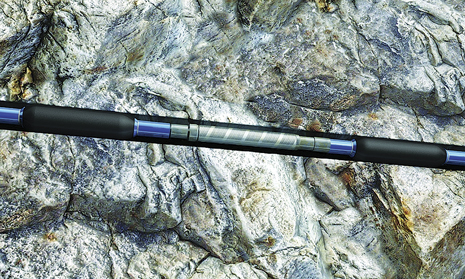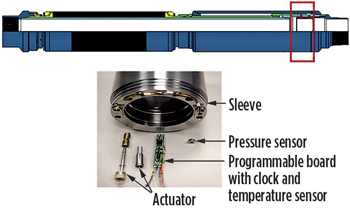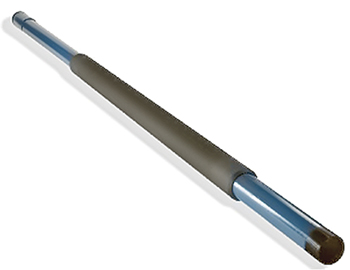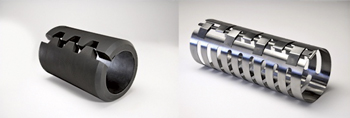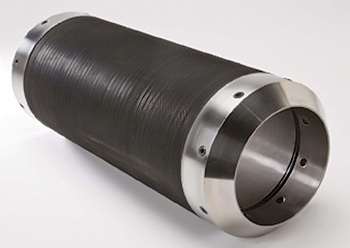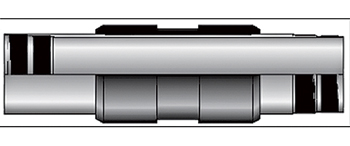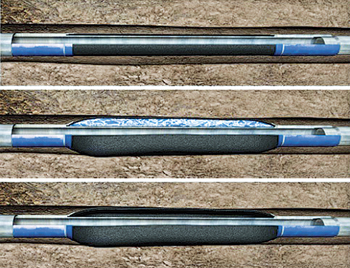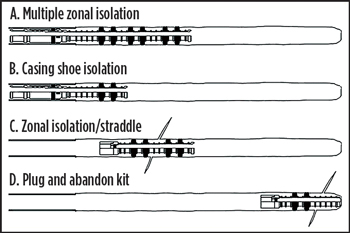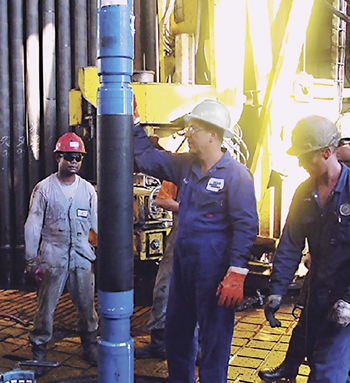Optimizing horizontal completions with openhole packers
Part 1. Openhole packers have transformed from novel technology to a critical key for success, effective in different applications, including curing losses, controlling high-permeability zones and fractures, improving flow equalization, and controlling water and gas production.
PAOLO GAVIOLI and ROBERTO VICARIO, Baker Hughes
Important considerations have been developed to help design horizontal completions under different fluid properties, reservoir uncertainties and optimum operational considerations, allowing for equalization of flow along the entire length of the horizontal section. These best practices came from extensive run history and lessons learned. Openhole packers often play the most critical role for a completion’s success. The availability of a wide range of new zonal isolation tools makes it easier to obtain the best, most cost-effective solution for each application. Openhole packers for compartmentalization are keys for success in many applications and offer benefits for inflow and annulus flow control. An important consequence is the ability to control gas and/or water after breakthrough. This has been proven from analyzing a significant amount of production logs acquired after installation of the packers. TRADITIONAL USES Until the early 2000s, the only commonly used openhole isolation packers were standard fluid-inflated external casing packers (ECPs), mainly used for stage cementing or isolation and abandonment of openhole sections. Today, with horizontal wells and advanced completion becoming almost the norm, wellbore isolation packers are an unavoidable and valuable part of many different types of completions. A classic example is the application of passive inflow control device (PICD) completions. Introduced in Norway in 1997, they were initially run without any packer.1 Several years later, when ICDs were introduced to Saudi Arabia, packers became an integral part of the completion to improve the performance.2-5 With the advent of ICD solutions for carbonate fields, mainly to control fracture domination, packers became even more important, and the average number of packers run per well increased substantially.6,7 Today, for ICD completions, openhole packers are often the most critical components of the completion, and the ones that will determine the success of the completion in terms of water and free gas control.8-10 PACKER SELECTION There are many types of openhole isolation or wellbore isolation (WBI) packers available. Each packer has unique features and benefits, as well as limitations. Hence, it is important to choose the appropriate packer for a specific application. The following factors should be considered in determining the appropriate packer for a determined application, normally in this order:
WELLBORE ISOLATION PACKERS There are several different types of openhole isolation packers in the market, the result of several decades of technology innovation and differentiation. External casing packer. An ECP is a primary cementing and zone isolation packer, with an inflatable packing element that is used as an integral part of the casing or liner string to provide a seal between the casing and the wellbore/host casing. The inflatable element is expanded by pumping cement or other fluid down the casing and is compatible with ongoing cementing operations. ECPs are available for most casing sizes, weights, grades, thread connections and materials, Fig. 1. Typically, the most common ECPs have an inflatable element with non-continuous rib-type reinforcing at each end of the element. The ribs are steel strips that overlap each other and form a steel shell at each end of the element when it is expanded. The element length can vary from a few feet to 40 ft. In some cases, it may include multiple layers of composite and non-composite, ribs-type reinforcement at each end of the ECP to distribute stresses evenly, increase element strength, enhance proper deployment in irregular wellbores and increase elongation of the elastomer at high temperatures.
The ECP can be inflated using different fluids. Depending on the fluid, different considerations have to be made and that will also determine the performance and longevity of the packer. The two main applications are fluid-inflated ECP and cement-inflated ECP: Mechanical non-inflatable openhole packer. Mechanical packer systems are a primary cementing and zone isolation packer, using a non-inflatable packing element run as an integral part of the casing string to provide a seal between the casing and the wellbore, Fig. 2.
This type of packer usually has an elastomeric element with composite structure, which is set mechanically by allowing wellbore hydrostatic pressure or applied hydraulic pressure to flood an atmospheric chamber and to apply setting force to the non-inflatable element. The element is then mechanically locked in place via a body lock ring. Additional setting force can be attained by applying additional pressure by selective means or by applying pressure to the entire casing string if applicable. A mechanical packer is normally run in the liner string between screens, slotted liners, or gravel-packed sections as a means to isolate production intervals. It can also be used in annular cementing operations to isolate the openhole/liner annulus in openhole completions in conjunction with stage cementing equipment. This packer can be run as a single, or stacked in multiples, to provide for increased seal length. Typically, there are two potential setting mechanisms to allow downhole pressure access to the setting piston, and the packer is also available with a feed-through option for intelligent well or remote-control option. Electronically actuated mechanical packer. This packer is a more recent and advanced version of the mechanical packer. The packer is based on the hydrostatic version of the standard mechanical packer, but it incorporates an electronic trigger that activates the packer without the need for any intervention or applied pressure, Fig. 3. This feature allows the packer to be used in more applications, since there is no need to run an inner string, or no need to be able to pressure up the well.
Swellable elastomer packer. Packers with swellable elements continue to be developed with a wide range of engineered swell characteristics. The two most commonly used compounds are oil-swell and water-swell. This packer became popular, mainly due to its lower cost compared to other types of packers and simplicity of deployment. Today it is probably the most commonly run wellbore isolation device. This packer is designed to work in either oil or water to provide an annular seal in oil producers and water injectors, Fig. 4. Elastomers reacting with oil-based fluids can initiate the swell reaction in concentrations as little as 3% oil, ensuring the element will set when deployed. As for the water-swelling compound, the rate of reaction or swelling is a function of temperature and concentration of salts. The polymer will not react in a pure oil-based fluid, but, will begin swelling in low water-cut fluids. Monovalent salts, such as NaCl, KCl and formats, are reasonably good at providing enough “free water” for the element to function (up to about 20% by wt.). However, divalent salts, such as CaCl2, CaBr2 and ZnBr2, will inhibit the swelling of the element in relatively low concentrations (>5% by wt.). When a scenario involves high salt concentrations and/or divalent salts, it is recommended to displace the packer area with fresh water-based fluid or water cut hydrocarbon production.
Swelling packers have been tested up to at least 10,000 psi differential (this can be increased further by a number of design features, such as longer or multiple elements, engineered swell materials and anti-extrusion end rings) and are HCl-, HF-, H2S- and CO2-resistant. Typically, predictor software is used to calculate, analyze and optimize the performance of swelling packers, based on operator parameters and well data. The final output of the calculation determines four factors: time taken to swell, time to seal (run-in hole time), differential pressure rating and the percent swell. Swell packers are being developed to perform in an extended application range, but there are various limitations to the technology, such as low downhole temperatures, large hole washouts, axial loads and downhole temperature changes. There are still cases, where a standard mechanical or inflatable packer can provide better zonal isolation than swellable packers. Field installable swelling packers. There are several types of swelling packers that, instead of being mounted on a joint of pipe, can be installed directly onto the completion or liner pipes. The two main categories are clamp-on and slide-on type packers. These packers are also called barriers, instead of packers, since the differential pressure across the set packer is much lower than for a standard packer, so they are used mainly as a means of an annular barrier in multi-segmented completions. A typical clamp-on swelling packer is built with a rigid steel cage surrounded with either oil-swelling or water-swelling compound, Fig. 5. The tool can be installed onto existing pipe and is secured to the base pipe using a hardened steel pin.
The typical slide-on type of swelling packer is fixed on the operator’s casing or screen/ICD blank section with set screws, and then run into the well like any other joint of casing. This tool is usually strictly used for debris management and as an annular barrier, and not rated or tested to hold differential pressure, due to the inherent variation of existing pipe finishes, Fig. 6.
Packers for expandable completions. The expandable isolation packer is an annular openhole sealing device generally used in combination with an expandable screen or expandable blank pipe, Fig. 7. This packer can also be used in a cased hole; in applications where flow area around an expanded tubular needs to be shut off. The packer is set during expansion of the base pipe (mandrel). A variation of this is a packer that is built with either water-swelling or oil-swelling element. The primary activation method for annular sealing is expansion of the solid pipe mandrel. A secondary activation method is via swelling properties of the rubber. The reactive element allows the packer to get a better seal against bigger hole sizes than the conventional expandable packer. The packer is generally designed to have an interference with the wellbore upon expansion. The swelling will act as insurance in the event of setting ID nonconformance.
Hybrid packers between ECP and swelling elastomer packers. The reactive core packer uses a non-cement inflation medium for permanent isolation in openhole completions, Fig. 8. A swelling reactive core is protected by an inflatable element. The initial seal provided by the inflatable element is less affected by downhole pressure and temperature changes after the core of the packer system has reacted with its inflation fluid and conforms to a solid core. As the swelling elastomer is protected during run-in, there is no need to worry about premature swelling. By using the ECP concept, an instantaneous seal can be created and tested.
To provide points of isolation in the openhole annulus, the reactive core packer is run on the production liner string. Typically, this hybrid packer is inflated with fresh-water-based wellbore fluid simply by either applying pressure to the casing or liner string, or by positioning an inflation tool across the packer and applying pressure directly to the valve system. Once the element is inflated, the core of the packer reacts with the inflation fluid to form a permanent seal. OPENHOLE PACKER APPLICATIONS The different applications for openhole isolation include:
Zonal isolation and abandonment. In many occasions, the isolation of openhole sections or the abandonment of the bottom portion of the hole is necessary. In these cases, several solutions are available, Fig. 9. Depending on the configuration of the assembly chosen, openhole packers are run along with blank pipe to isolate a section of wellbore. The assembly is generally run by means of a sleeve with a running tool, similar to the ones used for running liners, for example. Almost all types of packers may be suitable to be run for these applications, and the choice of which to run will depend on the previously presented criteria, Fig. 10.
Stage cementing operations. Off-bottom or stage cementing is a process that isolates non-cemented producing zones with cement placed above an openhole packer. The operational sequence includes the inflation of the openhole packer, using a ball, plug or an inner string tool, followed by the opening of the cementing valve to provide a communication path to the annulus above the inflated openhole packer. Cement will channel through the port of the cementing valve. The port will close with a plug or by a shifting tool to complete the stage cementing process. Cement or fluid-inflated ECPs are the preferred options for off-bottom cementing jobs. Applications of off-bottom cementing include:
Segmented sand control completions. Openhole packers are used to isolate different sections of producing pay or to isolate nonproductive zones from productive sections (like shale for example) or to shut off undesired formations (water or gas). Packers for these applications usually include swelling packers and mechanical packers, depending mainly on the hole gauge. Differential pressure across the packer is usually low, so short elements can be used, and even clamp-on or slide-on type swelling packers are often a suitable, cost-effective solution. A special case is the horizontal openhole gravel pack, where mechanical packers have to be used to set them immediately after the pack has been completed, and not to risk the start to set before or during the gravel pack operation. Segmented expandable completions. For segmented expandable completions, the packer is set by simply expanding the entire assembly, including screens, blank pipe and packers. This solution is commonly used when sections in the open hole have to be created, to run a concentric string with selective completion to control the different zones. In this case, the concentric string will have packers that will be set, corresponding to each external expandable packer. Multizone fracturing systems. In this application, packers are run-in between fracturing sleeves to isolate different sections of the hole that will be fractured one at a time. The differential pressure across the packer can be very high, and it is the most critical parameter for the selection of the packer. Typically, very long element swelling packers or mechanical hydraulically actuated packers are run, depending on the type of application and the hole size. Alternatively, for extreme applications (perhaps involving high temperature), cement-inflated ECP may be the only option. This application is becoming widespread, due to extensive tight gas and coalbed methane applications around the world, to increase well productivity. Segmented passive inflow control device (PICD) completions. This is the most common application for openhole packers in recent years. The most important role for the packer is to create different compartments, where each PICD can work independently and create a different drawdown to the formation to equalize the hydrocarbon influx. Intelligent wells systems. In this application, instead of having PICDs that self-adjust, depending on the fluid and PI of each zone, the control is applied through ICVs. Control lines to the surface allow the ICVs to be either adjusted or shut off completely. Part 2. The application of openhole packers in advanced ICV and PICD horizontal completions will be discussed in Part 2 of this article in the August issue. To demonstrate the benefit of compartmentalization in a PICD openhole completion and the effects on the final water cut/GOR, a 3,500-ft horizontal well has been simulated, and sensitivities have been run on the number of compartments. The results of the simulation will also be presented in Part 2.
ACKNOWLEDGMENT LITERATURE CITED
|
|||||||||||||||||||||||||||||||||||||||||||||||||||||||||||||||||||
- Coiled tubing drilling’s role in the energy transition (March 2024)
- Using data to create new completion efficiencies (February 2024)
- Digital tool kit enhances real-time decision-making to improve drilling efficiency and performance (February 2024)
- E&P outside the U.S. maintains a disciplined pace (February 2024)
- U.S. operators reduce activity as crude prices plunge (February 2024)
- Drilling advances (January 2024)

